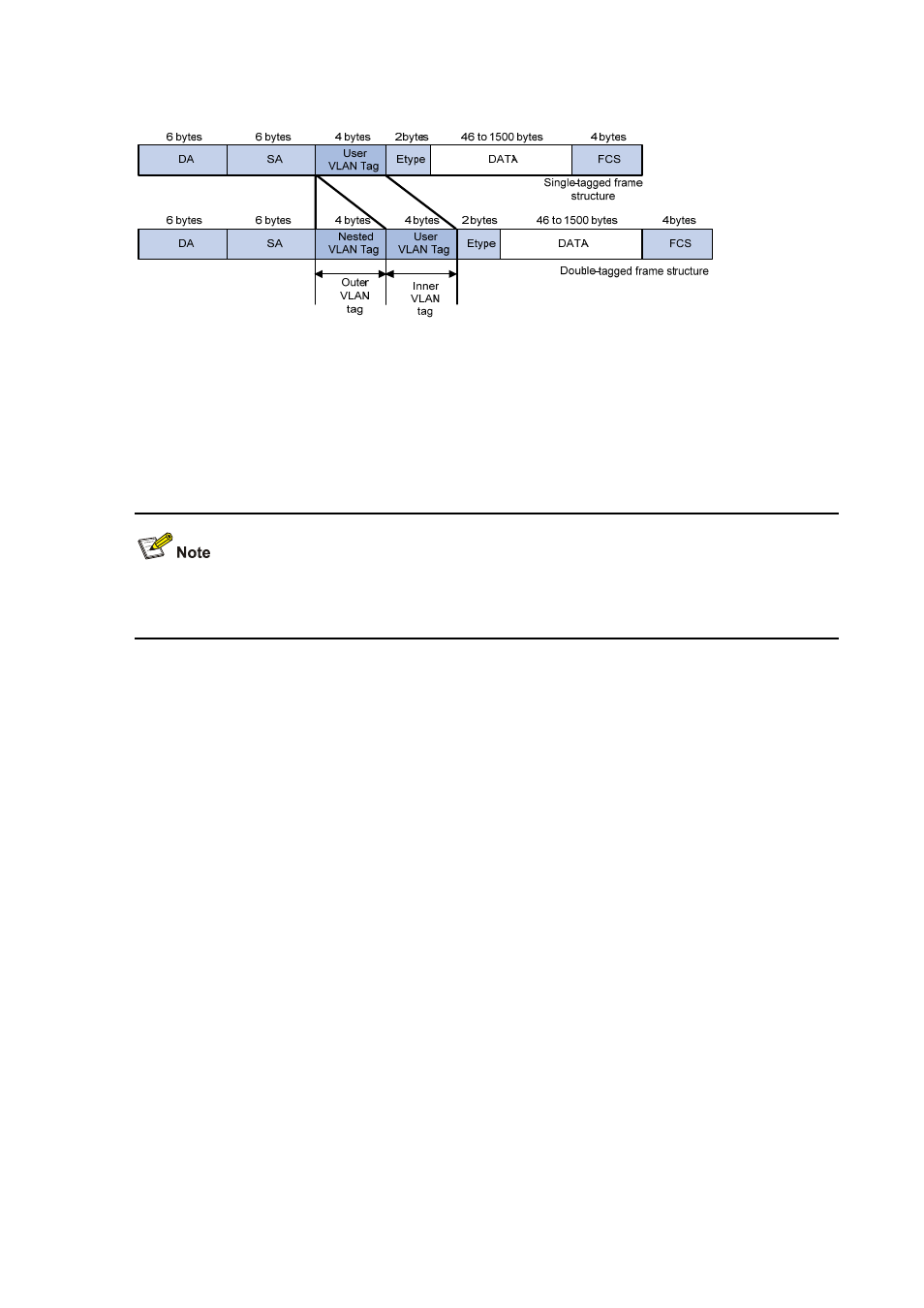Implementations of qinq, Figure 12-1 – H3C Technologies H3C WX6000 Series Access Controllers User Manual
Page 101

12-2
Figure 12-1
Single-tagged frame structure vs. double-tagged Ethernet frame structure
Advantages of QinQ:
z
Addresses the shortage of public VLAN ID resource.
z
Enables customers to plan their own VLAN IDs, without running into conflicts with public network
VLAN IDs.
z
Provides an easy-to-do Layer 2 VPN solution for small-sized MANs or intranets.
The QinQ feature requires configurations only on the service provider network, and not on the customer
network.
Implementations of QinQ
There are two types of QinQ implementations: basic QinQ and selective QinQ.
1) Basic
QinQ
Basic QinQ is a port-based feature, which is implemented through VLAN VPN.
With the VLAN VPN feature enabled on a port, when a frame arrives at the port, the switch will tag it with
the port’s default VLAN tag, regardless of whether the frame is tagged or untagged. If the received
frame is already tagged, this frame becomes a double-tagged frame; if it is an untagged frame, it is
tagged with the port’s default VLAN tag.
2) Selective
QinQ
Selective QinQ is a more flexible, VLAN-based implementation of QinQ. In addition to all the functions
of basic QinQ, selective QinQ can tag the frame with different outer VLAN tags based on different inner
VLAN IDs.